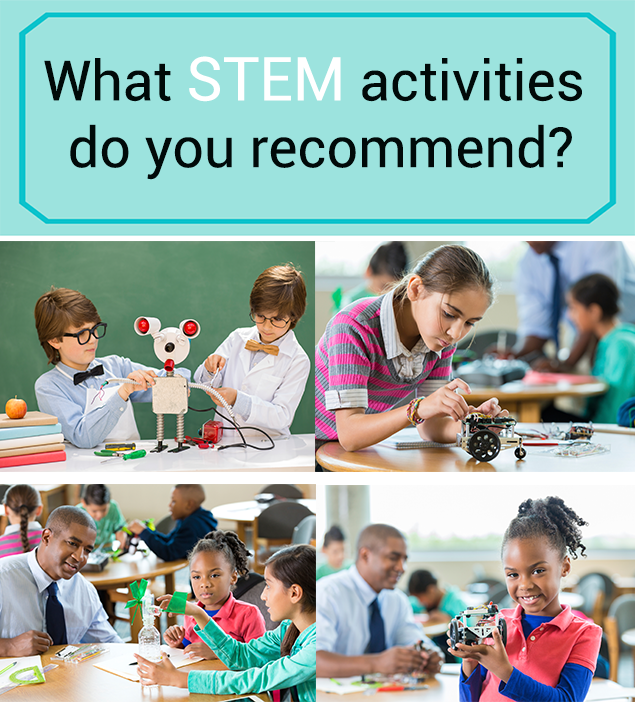How Can Teachers Incorporate STEM While Keeping the Cost Low?
Posted by Network Support · Leave a Comment
Integrating STEM into our classrooms does not require a huge budget or curriculum change. Any school, any classroom and any teacher can adapt their classroom to incorporate STEM.
One of the primary costs of STEM implementation is curriculum. Designing STEM curriculum is not something only experts in STEM can do. Any teacher, who is an expert in their subject can work with other teachers and use resources to incorporate STEM into their lesson plans.
Designing STEM Instruction
Classrooms that want to keep the cost of STEM instruction low will need to design their own STEM curriculum. Designing interdisciplinary STEM instruction that is specific to students and staff has a number of benefits. Integrated STEM curricula have proven to increase student motivation and achievement and can make a teacher’s job easier. Here is a look at the process of designing STEM instruction that can be applied to all classrooms- elementary, middle and high school:
Yearlong Scope and Sequence
Writing a standards-based STEM scope and sequence, or a yearlong plan is easier than it appears. Since all disciplines are easily integrated with science, schools often use these standards at the foundation for all instruction. But more importantly, science engages all learners, and prepares students to compete successfully in a new global economy. As such, it does not matter if the sites are designing a kindergarten through twelfth grade learning progression, or the scope and sequence for a specific grade level, always start with science.
Most state science standards are separated into four strands: Nature of Science and Engineering; Physical Science; Earth and Space Science; and Life Science. Because there are four strands, it is easiest to divide the year into four 10-week, interdisciplinary units focusing on each strand. The Nature of Science and Engineering standards, however, are woven into all units in order to keep engineering a key component of the instruction. This purposeful planning allows students to fully explore topics and to develop creative solutions to real-world problems. There are 3 steps in this planning process:
1. Access Standards
The first step in the process is to access the standards for STEM. It is often easiest to start the process of planning with science standards. The best place to find the science standards, in electronic formats, is at a state’s department of education website until the Next Generation Science Standards are completed and adopted. Educators have found it easiest to begin with hard copies of the standards. This provides the opportunity to study all standards at one time, and to learn what is expected of a particular-age student. It also allows sites to rearrange or reorder the strands to best meet the needs of all students and staff. Since these standards are the foundation for the entire year’s curriculum, it is important to know them well.
When placing science into the yearlong framework, make sure to analyze the standards, understand what motivates students, and use best practices to learn science and scaffold skills throughout the year. Bloom’s Taxonomy is a useful model to order the progression of standards throughout the year.
2. Hook Your Students
The next step in designing a yearlong scope and sequence is to find a “hook” for each unit to engage learners. After finding the “hook,” match the selected standards with the science curricula that will be used.
3. Connecting the Standards
While placing science into the yearlong plan, begin thinking about interdisciplinary connections and start collecting resources to help students make connections. This helps to keep instruction integrated and STEM-focused. Resources can include curricula, books, people, field trips, and websites. Organizing resources now, saves valuable time when teaching the units later.
Once the science order and focus has been decided, it is time to gather and analyze the remaining academic standards. Once again, it is recommended that you print hard copies of the standards for each discipline. This step allows all stakeholders to view the big picture as well as the individual components. Next place all required curricula into a unit. This step fosters opportunities to expand upon concepts and instruction already familiar to educators. Current curricula and materials can and should be used. Not only will this save money, it also saves time. It is simply the matter of using current resources in a new way to keep STEM as the connection for all instruction.
Like this article for teachers?
Browse the Professional Learning Board COURSE CATALOG to find related online courses for teachers in your state. Professional Learning Board is a leading provider of online professional development classes that teachers use to renew a teaching license or renew a teaching certificate.





